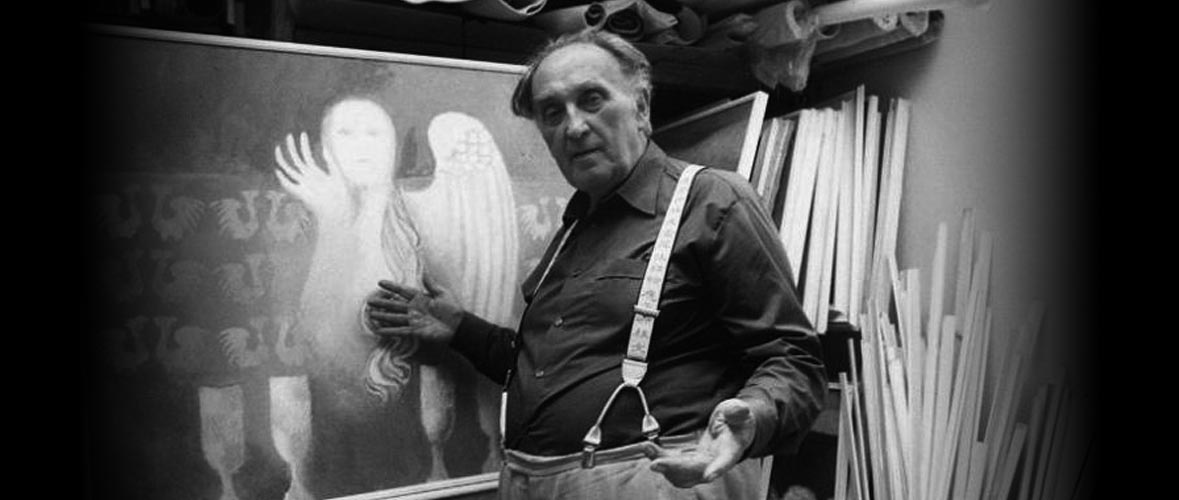

Vladimír Komárek developed the heritage of the imaginative line, a noteworthy phenomenon of 20th century
Czech art.
The symbolism of Jan Zrzavý’s poetics was a strong impulse which had an impact on Komárek’s artistic perception of the world. His visual pictorial imaginations as “ordinary miracles” resulted from the intersection of reality and the world of dreams and fantasy. He developed a lyrical-poetic concept in which he translated the objectivity of the real world into the language of metaphorical symbols and signs.
By participating in the exhibition entitled Básníci naivní imaginace (Poets of Naïve Imagination, 1964) the artistic character of his work was included in the imaginative line. He liked his everyday life and world of simple things. They became the subject of his paintings, entered his fantasy and were transformed into a colorful world of dreams. He painted ordinary things, objects that surrounded him inside and outside his home. His poetic motifs of flowers, clouds, trees, secluded places, swans, angel creatures, and ordinary items – windows, doors, façades, ladders, and figures, faces and biblical themes emerge in his paintings as blurred silhouettes out of imaginary space. This suggestive impression is empowered by the use of color which he worked with in fine pastel monochrome tones. The poetics of his paintings create a melancholic impression resulting in nostalgia and sorrow. Krížová cesta (Stations of the Cross) for the church in Konecchlumí, which he created as a minimalistic composition, is one of the culminations of his work. He depicted a traditional theme of biblical drama as a general and eternal question of the meaning of human existence.
Eva Trojanová
Vladimír Komárek (1928 Hřensko – 2002 Jilemnice) a highly respected painter, graphic artist, illustrator and teacher, won international recognition as a master of the dry needle. He studied at the Art Glassmaking School at Železný Brod before moving on to the Academy of Fine Arts in Prague and completing his studies at the Academy of Arts, Architecture and Design in Prague in 1954 (under prof. Karel Štikl). He worked in various occupations but he didn’t fully dedicate himself to art until much later in his life. He was a member of art associations SČUG Hollar (Hollar Association of Czech Graphic Artists) and SVU Mánes (Mánes Association of Fine Artists) and prepared over 150 solo exhibitions at home and abroad. In 1994 he won the Masaryk Academy of Art Prize.

















































